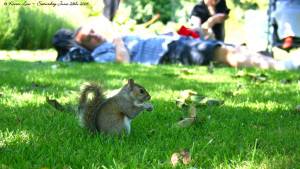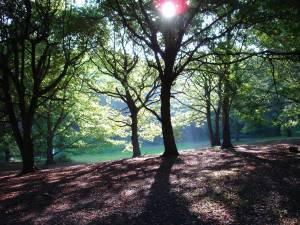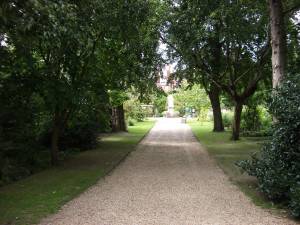If there is one thing London does well it’s open spaces. One of the greenest cities in the world, there are more than 1,500 parks to choose from. From the Royal Parks to open heaths, landscaped gardens and fairytale woodlands, it’s never hard find some green open space in the capital. Here’s a look at the best parks and gardens in London.
Hyde Park
The most famous of London’s parks, at over 350 acres Hyde Park it is also one of the largest of London’s Royal Parks. With more than 4,000 trees, a huge lake, a meadow, and an ornamental flower garden, it’s easy to forget that you really are in the centre of London. From Henry VIII who used the grounds for his own private hunting to James I who finally allowed the public to enter, The Great Exhibition of 1851 which took place in the park and more recently the arrival of the Diana, Princess of Wales memorial; the park has firmly held it’s place in London’s history. There is always something going on in the park and even on a quiet day in May you can listen to the latest rants over at Speakers Corner or should you brave enough, go swimming in the Serpentine.
Greenwich Park
Greenwich is the oldest enclosed Royal Park and its 13 acres of protected land provides an urban sanctuary for deer, foxes and over 70 species of bird. Walking from the quant and historical village community of Greenwich into the park and to the top of the hill guarantees spectacular views across the River Thames and central London. These views along with it’s royal history, the significance of the area’s maritime past and the scientific accomplishments which brought about Prime Meriden timeline, have secured Greenwich’s award as a World Heritage site. Its not just being able to stand with one foot in the eastern hemisphere and the other in the west that draws tourists and local back to Greenwich — it truly is a cultural and historical significant park to explore.
Hampstead Heath
Hard to believe this actually in London, the 800 acres of grasslands, meadows, woodland, ponds and bogs make Hampstead Heath a real city break within the city. A real haven for woodland nature lovers, Hampstead Heath’s ponds, valleys, hedgerows and ancient trees, provide home to kingfishers, reed warblers and all three species of British woodpeckers as well as a host of other creatures such as butterflies, moths and other insects. The Heath is popular all year round with pony riders, ramblers, dog walkers and joggers but summer is particularly special. Be sure to take in the view from the top of Box Hill, where the whole city can be seen sprawling before you.
Royal Botanic Gardens, Kew
The Royal Botanical Gardens, more commonly known at Kew Gardens, are 121 hectares of landscaped gardens and botanical glasshouses which attracts almost 2 million visitors annually. Not only are the gardens a picturesque landscape to explore, the non-governmental organization that funds the site is an internationally important botanical research and education institution with 700 staff and an income of over £56 million.
Created in 1759, the gardens celebrated their 250th anniversary in 2009. The site has grown to hold the world’s largest collection of living plants, which includes more than 30,000 different kinds of plants in the Living Collections, while the Kew Herbarium is one of the largest in the world with approximately 7 million specimens—some of which are extinct in the wild.
Kew gardens are also home to some historical architectural designs including the Tree Top Walkway, the hot and humid Waterlilly House, home to heat-loving plants and the Nash Conservatory that was originally designed for Buckingham Palace but moved to Kew in 1836 by King William IV. The Pagoda is one of Kew’s most striking structures. Completed in 1762 and standing ten storeys, this octagonal structure was inspired by designer William Chambers’ trip to the Orient. The Kew site includes four Grade I listed buildings and 36 Grade II listed structures making the gardens a culturally and scientific significant location to visit.
Chelsea Physic Garden
Chelsea Physic Garden is England’s second oldest botanic garden, founded by the Society if Apothecaries in 1673 to study botany and the ‘physic’ (which at this time referred to the science of healing) arts.
Its rock garden is the oldest English garden devoted to alpine plants and has one of the oldest rock gardens in Europe. Protected by the garden’s heat-trapping high brick walls, you’ll also find the largest fruiting olive tree in Britain and the world’s northernmost grapefruit tree growing outdoors. Jealously guarded when under ownership of the Worshipful Society of Apothecaries, in 1983 the garden became a registered charity and was opened to the general public for the first time. The garden is a member of the London Museums of Health & Medicine.
If you visit during the annual winter openings be sure to see the famed and fairytale like snowdrop collection. Incredibly there are around 75 varieties of these delicate looking but hardly little blooms; from the common garden species to variants with green-tipped petals and double-headed flowers.






















